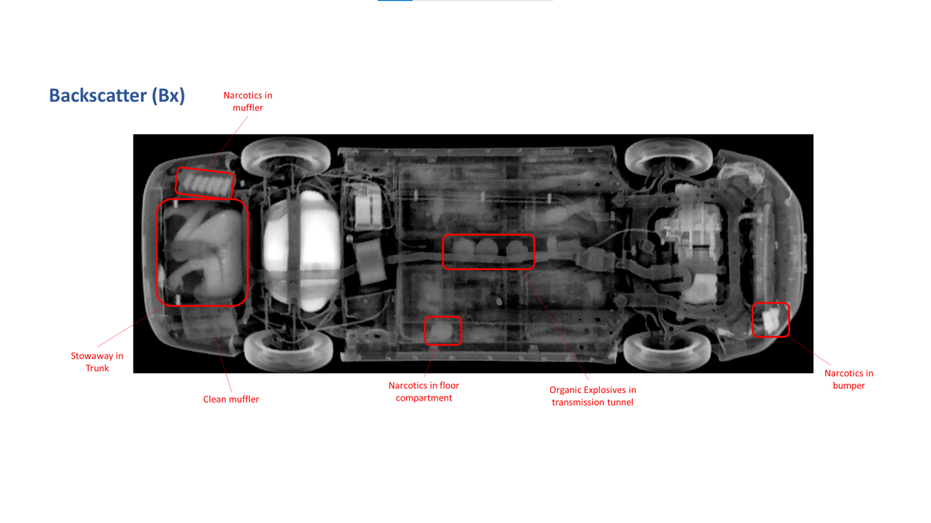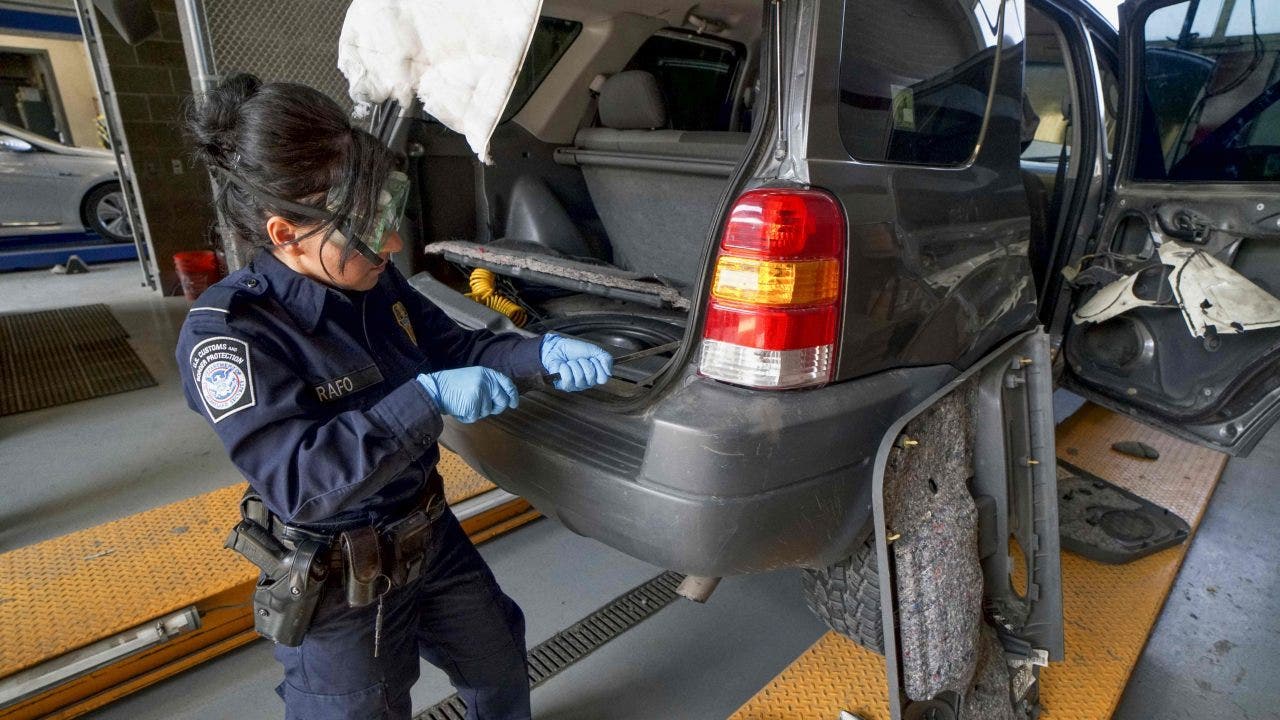A Boston-area company has been partnering with Customs and Border Protection (CBP) to deploy under-vehicle scanners at dozens of U.S. points of entry in order to combat the growing crisis of fentanyl, firearms and human trafficking flooding over the border, the company told Fox News Digital.
Viken Detection CEO Jim Ryan said his business, which is headquartered just northwest of Boston in Burlington, Massachusetts, was awarded approximately 50 traffic lanes at various points of entry to deploy their scanners for commercial and passenger vehicles entering the U.S. from Mexico.
People entering the U.S. drive at 3 to 5 miles per hour over the scanners called the Osprey-UVX, or Under Vehicle X-Ray, and a real-time backscatter image allows agents to “see through” the underside of the vehicle for organic materials or any other anomalies hidden in tires, steel panels, dashboards, seats, bumpers, oil pans, mufflers, and rear differentials where contraband can be concealed, Ryan said.
“It looks translucent, like you would be seeing through Plexiglas or something,” he said, adding that “it creates shapes and images that your brain is already used to,” so “it doesn’t require a lot of training” for agents to be able to read the images.
NEW BORDER TECHNOLOGY HELPS COMBAT ILLEGAL DRUG, WEAPON AND CASH SMUGGLING
“An officer in Florida almost died from inhaling fentanyl,” he said. “You don’t have to interact with these things. You could see it in the bumper. You could see it in the seat or the tire without drilling into things and using a screwdriver, which is typically how they did it. Now you can identify it, see what it is and then get it to a proper location and a safe location to extract the materials that you’re looking for.”
Viken Detection has been awarded contracts for their various scanning devices, including for lead detection, by CBP, the FBI, Immigration and Customs Enforcement, Bureau of Land Management, and Drug Enforcement Administration, among other federal agencies dating back to 2016. Their handheld scanners called the Nighthawk-HBI, or Handheld Backscatter Imager, and HBI-120, are used by federal, state and local agencies in multiple parts of the country, including the border.
“We’re pretty much all along the interior on the southern border, you know, up in the Midwest, too, in the central part of the country,” Ryan said.

“It’s difficult as a small business to penetrate these markets,” he said. “Small companies really are the heart of innovation and capitalism in our country and really driving the next generation of stuff. I know the government has great intentions and wants to support it, but that really needs to trickle down.”
“We had to fight incredibly hard to get where we’re at,” he added. “If we want the best stuff at the border, the best technology, you really got to make things easier for small companies.”
In 2018, CBP awarded a $28.1 million Indefinite Delivery/Indefinite Quantity (IDIQ) contract to Viken Detection, previously named Heuresis Corporation, for their handheld scanners, according to the contract listing on USASpending.gov.
In 2020, CBP awarded a roughly $400,000 contract for Viken to install under-vehicle scanners at four points of entry as a test run, Ryan said. The next year, Viken was part of an IDIQ deal between CBP and three other companies totaling up to $480 million to provide their Osprey-EVX, or Entire Vehicle X-Ray, systems meant for scanning commercial vehicles to be installed along the border. Months later, Viken was part of another IDIQ deal with CBP and three other companies totaling up to $390 million to provide their under-vehicle scanners at the border.
Ryan said the funding has been enough to plan installations at about one-third of traffic lanes entering the country but that more are needed.
ILLEGAL IMMIGRANTS, FENTANYL ARE ‘HUGE PROBLEM’ ON THE BORDER: REP. CARLOS GIMENEZ
“There’s more to go,” he said. “CBP is in the process of implementing those solutions along the southern border. We have about four systems that were put out already as a demo in early systems to test it out, but the bulk of the systems will be going out next year and are already in the process of going through civil works and getting them ready to start live-scanning in bulk later next year.”
“We’re starting with the busier ports, but the goal is that everybody goes through it,” he added. “That should ramp up the seizures dramatically.”
Ryan said it was up to CBP to “catch up with the installations” at the border, so Congress can continue funding Non-Intrusive Inspection (NII) technologies.
CBP told Fox News Digital it is “actively working with industry to explore various technologies.”
“Investments in new technology deployments are prioritized to best support our frontline operations’ ability to quickly and efficiently identify threats while facilitating lawful trade and travel,” the agency said. “Pushing the NII technology ahead of primary inspections from just secondary inspection operations should result in more seizures of illicit goods and contraband attempting to enter the United States which otherwise would not be caught because they were not flagged for secondary screening.”
Ryan said he was in regular contact with members of Congress and that the support he has received has been “very bipartisan” from the beginning. He said legislators on both sides of the aisle are in agreement that contraband flowing over the border is a problem.
“There’s a consensus that this is the right thing to do,” he said.
Ryan said Congress has provided “significant funding” dating back to 2018 to install these systems at the border, but it has to keep providing that funding so that continued updates can be made to the technology. The CEO stressed the importance of U.S. authorities keeping one step ahead of the criminals, who will go to great measures to avoid detection.
“This can’t be dropped. It’s just so incredibly important,” he said. “We’re up against a multibillion dollar corporation and the drug cartels who want to beat the systems. So, you know, they’re going to do everything they can to thwart detection, and we got to keep things fresh.”
Read the full article here


